Tucked along the dramatic southern coast of Vik Iceland, lies the small but stunning village of Vík í Mýrdal, often simply called Vík. Though modest in size, this coastal gem is one of the most picturesque and beloved stops on the Ring Road.
Surrounded by black sand beaches, towering cliffs, and volcanic terrain, Vik Iceland, offers a perfect blend of Icelandic natural beauty, history, and adventure. Whether you’re a nature photographer, hiker, or just passing through, Vík is a place that leaves a lasting impression.
Where Is Vik Iceland Located?
Vík is located in the southern region of Iceland, about 180 kilometers (112 miles) southeast of Reykjavík, along Route 1, also known as the Ring Road. It’s the southernmost village in Iceland and is often included in South Coast itineraries due to its accessibility and proximity to several key natural attractions. Despite its remote setting, Vík is a well-equipped village with accommodations, dining, fuel stations, and tour services.
Best Time to Visit Vik Iceland
Each season offers something unique in Vík:
- Summer (June to August) brings long days, mild weather, and puffins nesting on cliffs.
- Autumn (September to October) offers fewer tourists and golden landscapes.
- Winter (November to March) transforms Vík into a snowy wonderland, offering a chance to see the Northern Lights.
- Spring (April to May) awakens the countryside with blooming moss and clearer skies.
Vík is beautiful year-round, but visitors should always be prepared for quick weather changes.
Vík Iceland Weather
The weather in Vík is famously unpredictable, like much of Iceland, and varies greatly with the seasons. Summers (June–August) are mild, with average temperatures around 10–13°C (50–55°F), making it the most popular time to visit. The days are long, and the midnight sun allows for extended outdoor exploration.
In contrast, winters (November–March) are cold and often snowy, with temperatures averaging -1 to 4°C (30–39°F). Strong winds and sudden changes are common year-round, so it’s essential to dress in layers and prepare for rain, wind, or sunshine at any moment. Always check the local forecast before heading out, especially if you’re planning to drive or hike in the area.
Related: How to Visit Easter Island?
Top Attractions in Vik Iceland
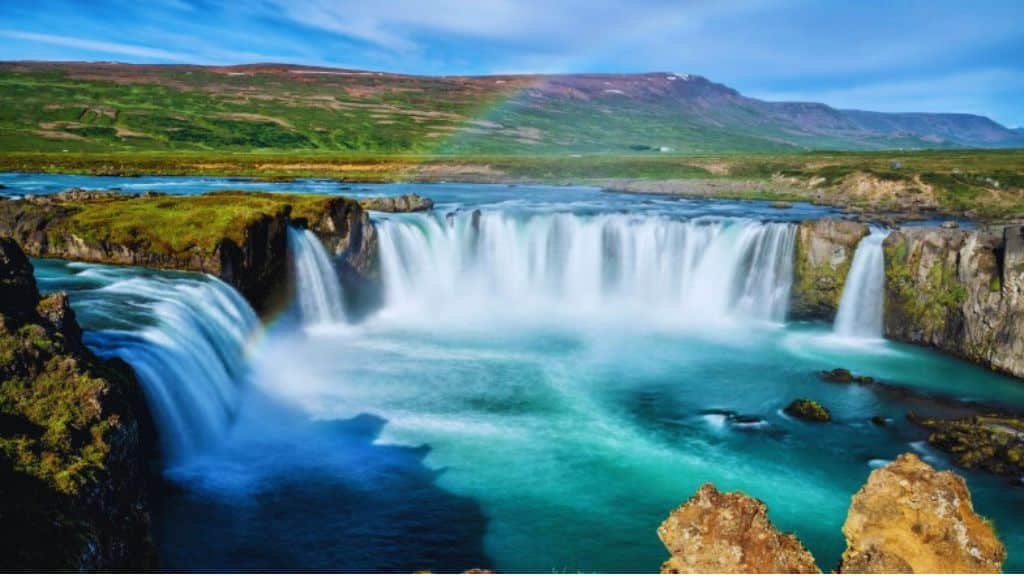
Vík Iceland, may be a small village, but it’s surrounded by some of the country’s most breathtaking natural wonders. From black sand beaches and sea cliffs to glaciers and volcanoes, these top attractions in Vík showcase Iceland’s dramatic beauty and raw power.
1. Reynisfjara Black Sand Beach
One of the most famous black sand beaches in the world, Reynisfjara is both beautiful and haunting. With its smooth, jet-black volcanic sand and towering basalt columns, the beach feels otherworldly. Offshore, the Reynisdrangar sea stacks rise from the ocean, tied to Icelandic legend as trolls turned to stone.
While it’s a must-visit spot, safety is critical—sneaker waves are powerful and unpredictable. Visitors should always stay a safe distance from the waterline.
2. Dyrhólaey Peninsula
Just west of Vík is the Dyrhólaey Peninsula, known for its massive arch-shaped rock formation that you can see from viewpoints above the cliffs. The peninsula offers sweeping views of the coastline, glaciers in the distance, and even puffins nesting on the cliffs during summer.
A lighthouse perched atop Dyrhólaey adds charm to the dramatic landscape, making it a favorite among photographers.
3. Vík Church (Víkurkirkja)
Overlooking the village from a nearby hill is Vík Church, a quaint red-roofed building that’s become an iconic symbol of the town. It’s not just beautiful—it serves a vital role as a gathering point during volcanic emergencies due to its elevation. On a clear day, the view from the church over Vík and the Atlantic Ocean is nothing short of magical.
Read More: How to Visit Yukevalo Island?
10 Best Things to Do in Vik Iceland
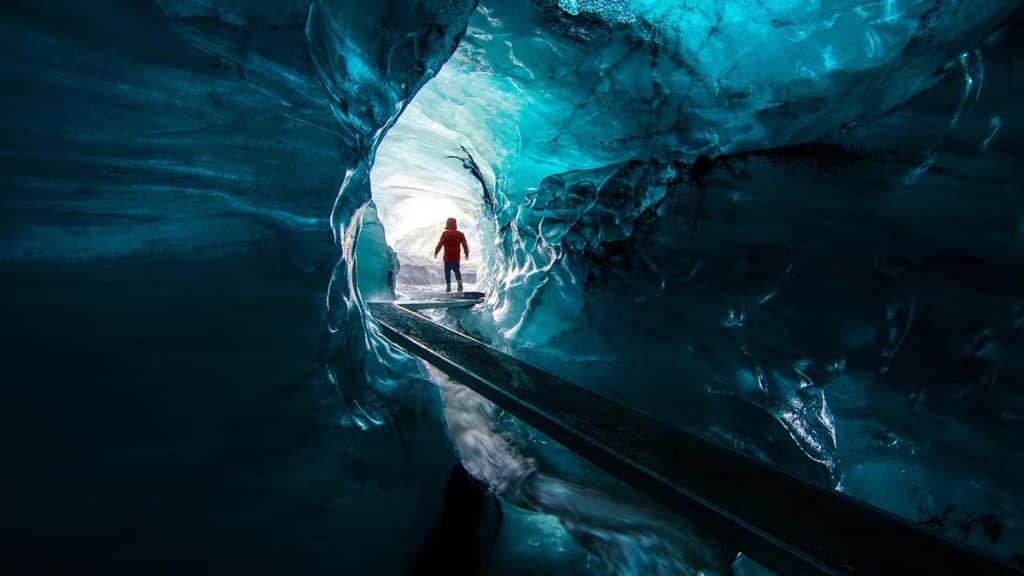
1. Walk on Reynisfjara Black Sand Beach
Reynisfjara is arguably one of the most dramatic and iconic beaches not only in Iceland but in the world. The beach’s signature jet-black volcanic sand was formed by cooled lava that has been broken down over time by the fierce Atlantic waves. Visitors flock here to marvel at the basalt column formations, which resemble a staircase carved by nature into the cliffside.
The beach’s most famous feature is the Reynisdrangar sea stacks, towering basalt rock pillars said in Icelandic folklore to be trolls turned to stone by sunlight. The combination of crashing waves, eerie beauty, and geological wonder makes Reynisfjara a must-visit destination.
Caution: The beach is stunning but dangerous. Sneaker waves—unpredictable surges of water—can sweep people into the sea. Stay well back from the shoreline and always follow posted safety guidelines.
2. Visit Dyrhólaey Peninsula
The Dyrhólaey Peninsula is a small promontory with one of the most breathtaking panoramic views in Iceland. The name Dyrhólaey means “door hill island” in Icelandic, referencing the massive stone arch carved by the ocean through the headland. On clear days, you can see the endless stretch of black beaches to the west and the distant glaciers to the north.
Dyrhólaey is a protected nature reserve, and during the summer months, it becomes a nesting ground for thousands of seabirds, including the adorable Atlantic puffin. The cliff’s edge offers a safe and peaceful way to observe these birds in their natural habitat. The Dyrhólaey Lighthouse, dating back to 1927, adds charm and makes for great photo opportunities.
Note that certain areas may be closed during puffin nesting season to protect wildlife—check access in advance.
3. Explore Vík Church (Víkurkirkja)
Perched on a hill overlooking the village, Vík Church (Víkurkirkja) is a simple yet iconic structure with its red roof and white walls standing in sharp contrast against the often stormy skies and black beaches below. Built in 1934, it serves not only as a place of worship but also as an emergency gathering point in case of a volcanic eruption from the nearby Katla volcano.
The view from the church hill offers one of the best vantage points in Vík, especially during sunrise or sunset. On clear days, you can see the dramatic Reynisdrangar sea stacks in the distance, the village below, and the Atlantic Ocean stretching endlessly beyond.
4. Take a Glacier Hike or Ice Cave Tour
Just north of Vík lies Mýrdalsjökull, Iceland’s fourth-largest glacier, beneath which the active Katla volcano sleeps. Here, adventure-seekers can embark on guided glacier hikes, trekking across ancient ice, learning about crevasses and glacier movement, and enjoying views found nowhere else on Earth.
During winter, ice cave tours are particularly popular. These natural ice caverns, formed by meltwater carving tunnels through the glacier, feature brilliant blue walls that seem to glow from within. Each cave is unique and temporary, constantly shifting with the ice, making every visit a once-in-a-lifetime experience.
Tour operators provide all necessary gear and safety briefings, so even beginners can safely enjoy this thrilling activity.
5. Go Snowmobiling or ATV Riding
For a more adrenaline-fueled adventure, snowmobiling on Mýrdalsjökull or ATV riding along the black sand beaches near Vík are top choices. These guided experiences allow visitors to explore remote areas in a fast-paced, exciting way.
Snowmobile tours offer breathtaking views of the glacier’s white expanse, while ATV tours often include visits to abandoned farmhouses, riverside cliffs, and hidden trails through volcanic terrain. These tours are great for small groups and families looking to explore Iceland off the beaten path while learning about its natural history from local guides.
6. Soak in Seljavallalaug or the Secret Lagoon
While not located directly in Vík, Seljavallalaug Pool and the Secret Lagoon are easily accessible on a day trip from the village. Seljavallalaug, nestled in a mountain valley, is one of Iceland’s oldest swimming pools and is fed by a nearby hot spring. It’s rustic, open-air, and unique—perfect for a quiet dip with a view.
The Secret Lagoon, located in Flúðir, offers a more developed experience with changing rooms and café services. The pool is surrounded by steaming geothermal vents and bubbling springs, offering a relaxing contrast to Iceland’s cold climate.
Both are excellent options for warming up after a day of exploration.
7. Discover the Katla Volcano Exhibition
To understand the forces that shaped—and still shape—the Vík region, visit the Katla Center, located in the heart of the village. This small but informative exhibition offers an interactive look at the volcanic and glacial activity of the area, with a focus on Katla, one of Iceland’s most dangerous and closely monitored volcanoes.
You’ll learn about past eruptions, local legends, and the importance of preparedness in such an active zone. Educational exhibits, multimedia presentations, and historical photos make it a great stop for families and curious minds.
8. Shop Local and Enjoy Icelandic Cuisine
Vík offers several small shops and local boutiques where you can find handmade wool sweaters (lopapeysa), Icelandic art, and volcanic rock jewelry. It’s the perfect place to pick up a meaningful souvenir.
When it comes to food, don’t miss:
- The Soup Company – Known for rich soups served in edible bread bowls.
- Smiðjan Brugghús – A cozy brewery and bistro serving craft beers and gourmet burgers.
- Halldórskaffi – A local favorite for traditional Icelandic meals and warm hospitality.
These dining spots provide a great opportunity to experience Icelandic flavors and meet fellow travelers.
9. Capture Stunning Sunrises or Northern Lights
Vík is a haven for photographers. In summer, the sun rises and sets slowly, casting golden light over the cliffs and sea stacks. The Reynisfjara beach and Dyrhólaey peninsula are especially breathtaking during sunrise and sunset.
In winter, Vík becomes a prime location for Northern Lights viewing thanks to its dark skies and minimal light pollution. Head just outside the village to increase your chances of seeing the aurora dance above the glacier and sea.
Bring a tripod and a good camera—this is a photographer’s dream destination.
10. Join a Puffin or Birdwatching Tour (Seasonal)
From late May to early August, thousands of puffins nest along the cliffs around Vík, especially near Dyrhólaey and Reynisfjall. These adorable birds, with their colorful beaks and clumsy flight, are a favorite among wildlife lovers.
Join a guided puffin tour for the best viewing experience, including safe access to nesting sites, birdwatching tips, and educational insights into their behavior and migration. You may also see fulmars, Arctic terns, and guillemots along the coast.
Read Also: Luxury Cruise Around the Galapagos Islands
Outdoor Activities Around Vík
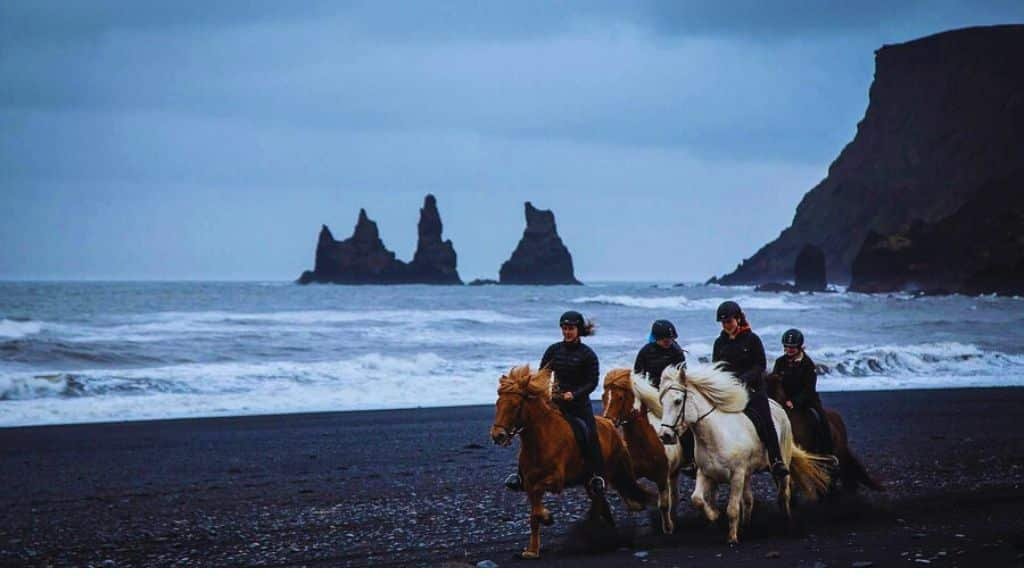
Vík is surrounded by opportunities for outdoor adventures:
- Hiking trails crisscross the hills and coastlines, offering panoramic views.
- Glacier tours on nearby Mýrdalsjökull allow you to explore icy crevasses and even visit ice caves during winter.
- Snowmobiling, ATV tours, and horseback riding are popular activities year-round.
- In the summer, the region becomes a paradise for birdwatching, with puffins, Arctic terns, and many other species.
Volcanoes and Natural Power
The village sits near the base of Katla, one of Iceland’s most powerful and closely monitored volcanoes. It lies hidden beneath the Mýrdalsjökull glacier, and though it hasn’t erupted since 1918, it remains active.
Katla has the potential to cause significant glacial floods (known as jökulhlaups), which is why Vík has a detailed emergency plan in place. Despite its proximity to such natural power, the village remains a safe and resilient community, embodying the spirit of Icelanders who live side-by-side with nature’s forces.
Read Also: How to Visit Alcatraz Island
Where to Stay and Eat in Vik Iceland?
Despite its small size, Vík offers a variety of cozy and comfortable accommodations:
- Hotel Vík í Mýrdal – A modern, centrally located hotel with beautiful views.
- Vík Cottages – Charming wooden cabins for a more rustic, private stay.
- Puffin Hostel – A budget-friendly option for backpackers and solo travelers.
For dining, The Soup Company is a traveler’s favorite, known for hearty soups served in bread bowls. Halldórskaffi and Smiðjan Brugghús offer burgers, craft beer, and Icelandic dishes in a relaxed atmosphere. Local shops sell souvenirs, wool garments, and handmade goods.
Hotels in Vík Iceland
Vik Iceland offers a charming selection of accommodations for all types of travelers, from luxury seekers to backpackers. You’ll find everything from stylish boutique hotels to cozy guesthouses and cabins with scenic views of the sea or mountains. Popular options include Hotel Vík í Mýrdal, a modern hotel located in the heart of the village with stunning mountain backdrops, and Vík Cottages, which offer a private, rustic experience just steps from the beach.
For a more budget-friendly stay, The Barn and Puffin Hostel Vík provide comfortable, social lodging perfect for road-trippers and solo travelers. Many of the hotels in Vík also include on-site restaurants, spas, or access to guided tours.
Best Restaurants in Vík Iceland
Despite being a small village, Vik Iceland, boasts a surprisingly good variety of restaurants and cafés serving both local and international cuisine. For a cozy and satisfying meal, The Soup Company is a top pick, known for its hearty soups served in freshly baked bread bowls.
Smiðjan Brugghús, a microbrewery and gastropub, offers craft beer and gourmet burgers in a laid-back setting—ideal after a day of exploring. Halldórskaffi is another beloved spot serving classic Icelandic dishes, pizzas, and fish specialties in a warm, family-friendly environment. Whether you’re craving comfort food or a unique Icelandic meal, Vík’s dining scene has something to satisfy every palate.
Travel Tips for Visiting Vik Iceland
- Pack for all weather: Even in summer, rain and wind are common.
- Drive carefully: Roads can be icy in winter; always check the weather and road conditions.
- Respect nature: Stay on marked trails, avoid walking on fragile moss, and follow safety signs—especially at beaches and cliffs.
- Book ahead: Vík is a popular overnight stop, especially in summer, so reserve your lodging in advance.
Conclusion
Vík Iceland, is a rare blend of natural drama and small-town charm. Whether you’re gazing at black sand beaches, trekking near glaciers, or simply enjoying a hot drink with a view, Vík offers an authentic taste of Iceland’s raw beauty. It’s more than just a stop along the Ring Road—it’s a destination that captures the heart and stirs the soul.
To Know More: Things to Do in Jeju Island
Frequently Asked Questions (FAQs) about Vík Iceland
Planning a trip to Iceland’s stunning south coast? This FAQ section about Vík Iceland, answers common questions travelers have about the village’s location, attractions, weather, and more—helping you prepare for a safe and unforgettable visit to this scenic destination.
Where is Vík located in Iceland?
Vík is a small village located on the southern coast of Iceland, about 180 kilometers (112 miles) from Reykjavík. It’s situated right along Route 1 (the Ring Road), making it an easy and scenic stop for travelers exploring Iceland’s south coast.
What is Vík known for?
Vík is famous for its stunning natural landscapes, especially Reynisfjara Black Sand Beach, dramatic sea stacks, and the Dyrhólaey Peninsula. It’s also known for its proximity to glaciers, active volcanoes like Katla, and for being one of the southernmost settlements in Iceland.
Is Vík a good place to stay overnight?
Yes, Vík is an excellent place to stay overnight, especially for those exploring the south coast or heading toward Jökulsárlón Glacier Lagoon. The village offers a range of hotels, guesthouses, and cottages, along with restaurants and local services, making it a convenient and comfortable base.
What are the top things to do in Vík?
Top activities in Vík include visiting Reynisfjara Beach, exploring the Dyrhólaey cliffs, hiking to scenic viewpoints, photographing Vík Church, and taking glacier hikes or ice cave tours nearby. In summer, puffin watching is a seasonal highlight.
When is the best time to visit Vík?
The best time to visit depends on your interests. Summer (June to August) offers long days, mild weather, and easier driving conditions. Winter (November to March) is great for seeing the Northern Lights, but travelers should be prepared for snow and icy roads.
Are there restaurants and shops in Vík?
Yes, Vík has a variety of restaurants, cafés, and small shops. Dining options include places like The Soup Company, Smiðjan Brugghús, and Halldórskaffi. You’ll also find souvenir stores, grocery options, and fuel stations in the village.
Is it safe to visit Vík given its proximity to the Katla volcano?
Yes, visiting Vík is safe. The Katla volcano is closely monitored by Icelandic authorities, and the village has emergency procedures in place. Travelers should stay informed by checking local alerts, but can explore the area confidently and safely.


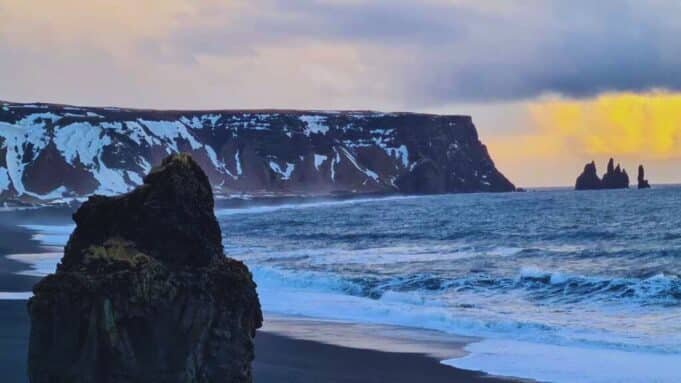

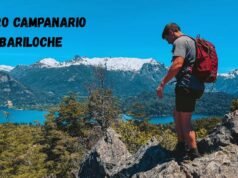
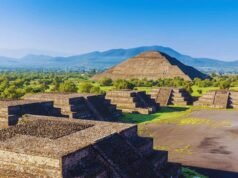










[…] Related Read: Vik Iceland […]
Comments are closed.